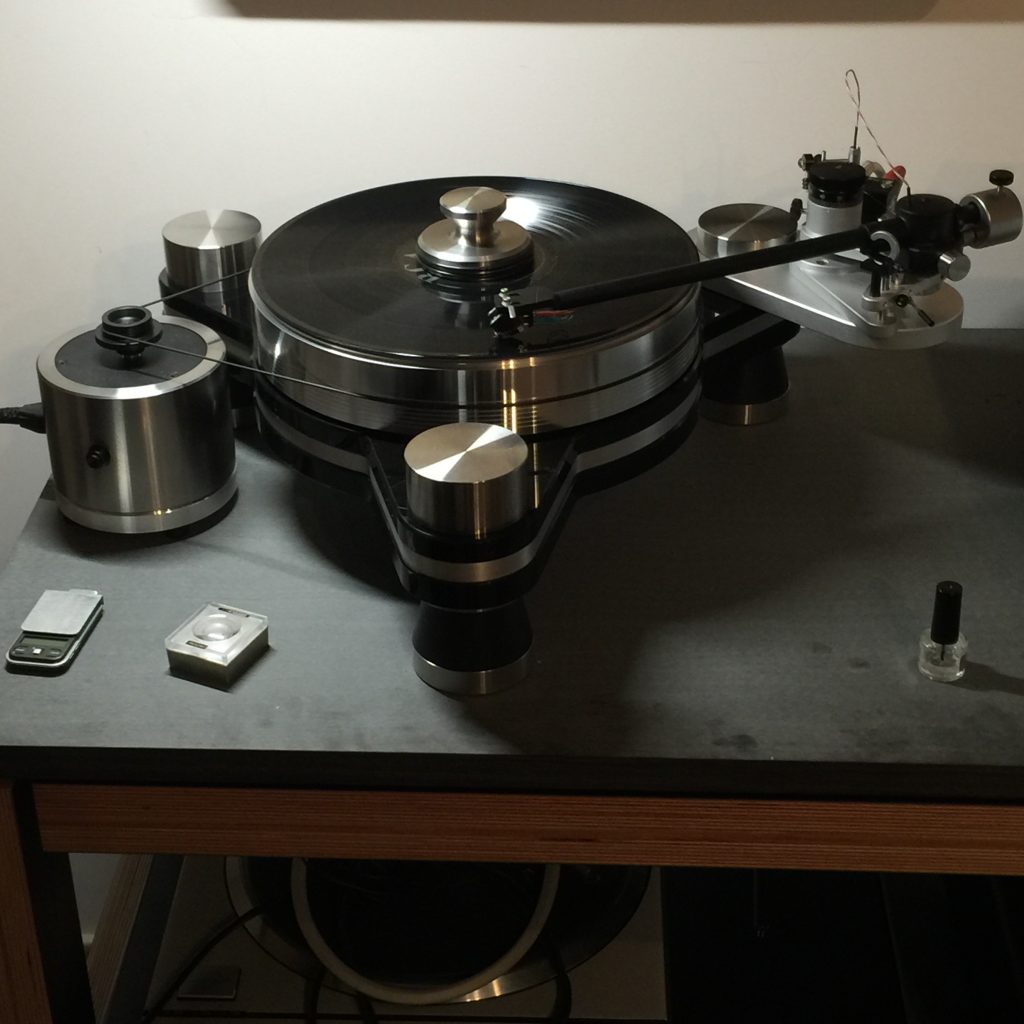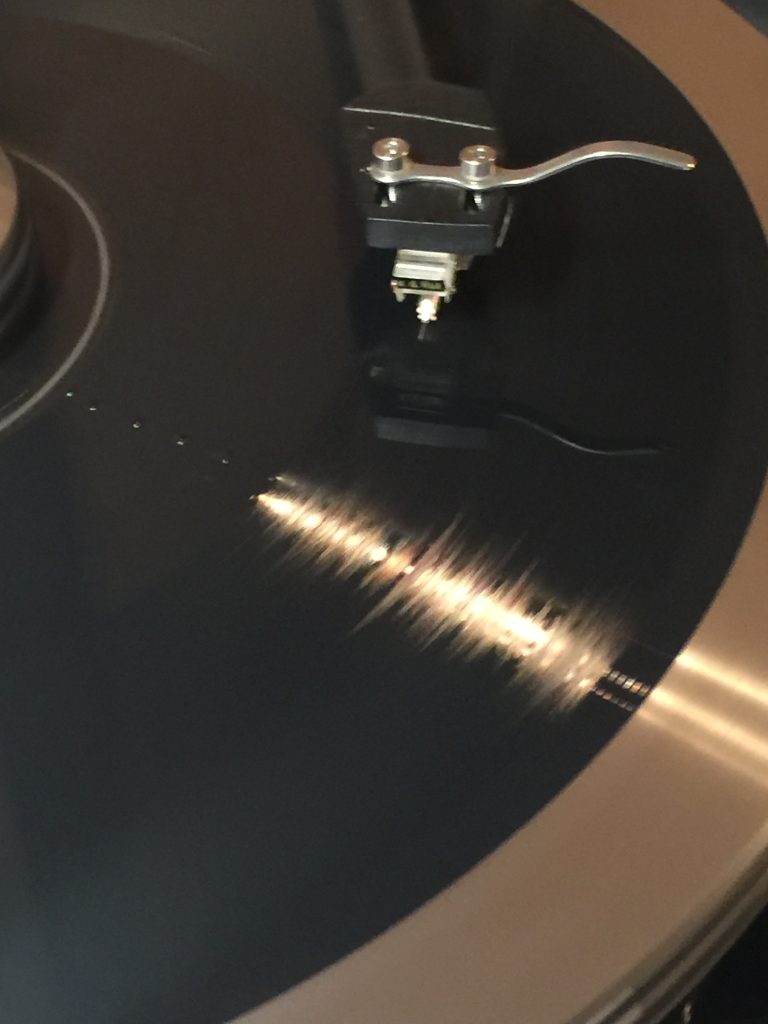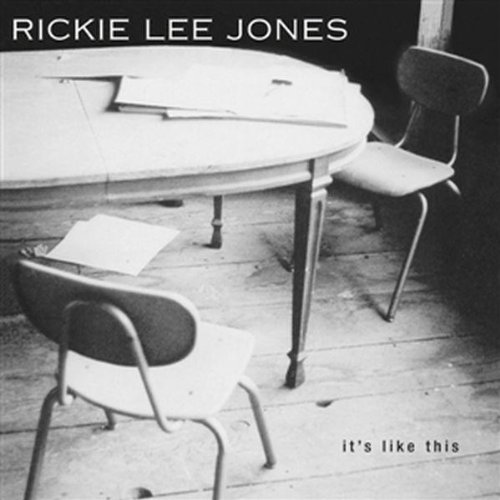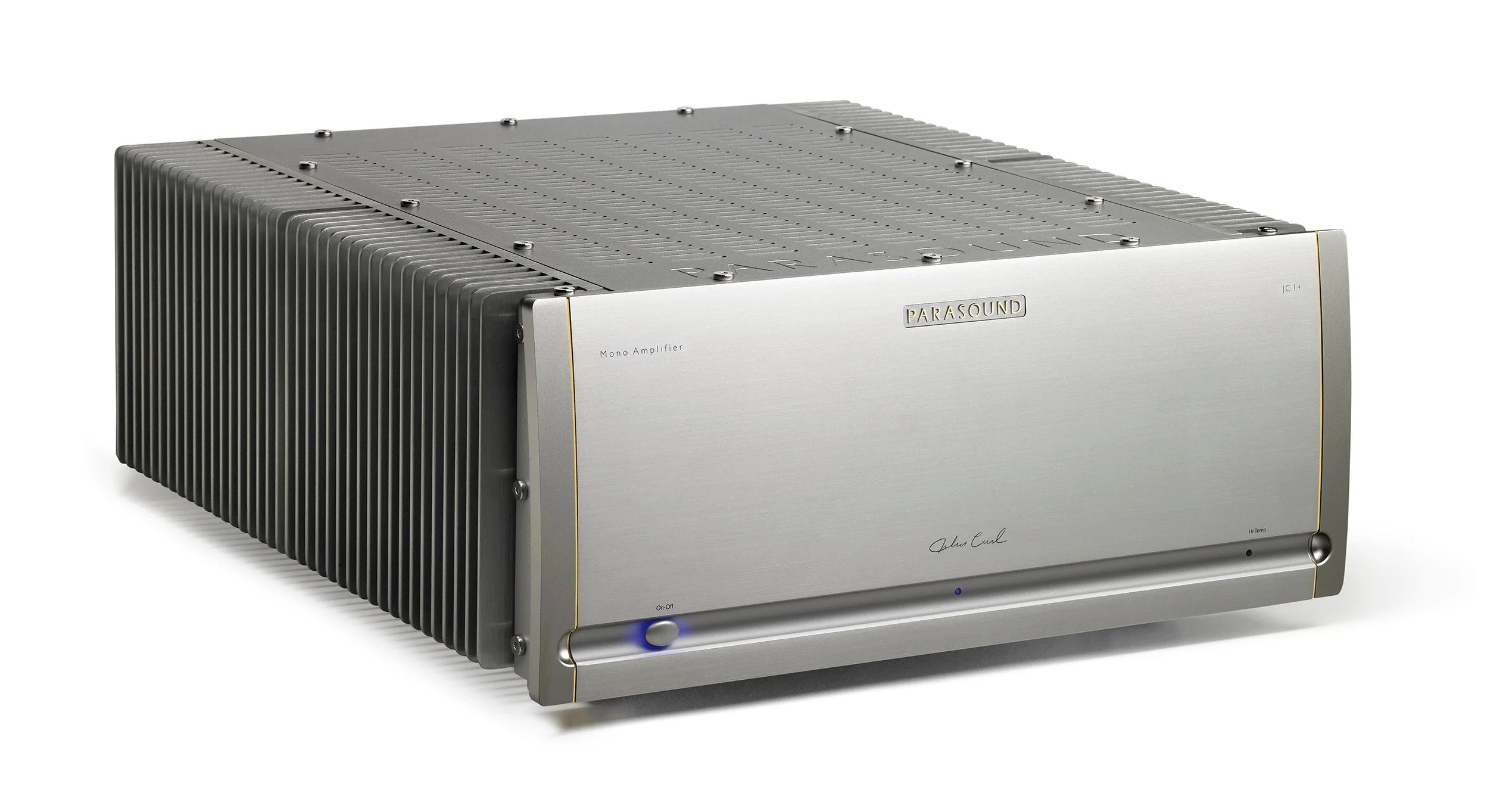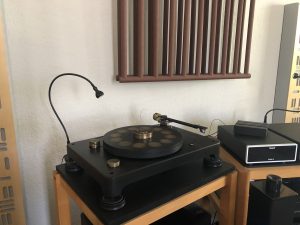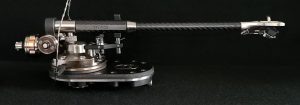Strap yourself in your seat, because we are going to go on a VIP ride with the VPI Avenger turntable. And yes, you dear readers are the VIPs in this adventure. This is part 1 of a 3 part series. The reason for the three parts is that I am going to review all three versions of the Avenger table that start at $10,000 for the 'basic' version and go up to $20,000 for the fully tricked out version.
Before I begin, I'm going to list the components that make up my reference system that were used for the review of the Avenger:
Zesto Andros 1.2 phono stage, Audio Research Ref 6 line stage, Audio Research Ref 75 amplifier with KT-150 output tubes, NOLA KO speakers, and Definitive Technology Reference subs. With the exception of the Ref 75, all the analog electronics and tables sit on my SRA Scuttle rack. The Ref 75 sits on an Adona amplifier stand. I'm leaving out my digital gear which sits on an Audio Vault rack and my VPI TNT rack which has been repurposed to hold my Otari MX-55 2-track tape deck and my pair of Ampex 350s because the rest of my reference system isn't pertinent to the review of the Avenger.
After all of the proper arrangements were made, the VPI Avenger showed up at my door in two boxes shortly before Christmas. This was a little apropos, because it felt like I was getting a Christmas present. The big box contains the plinth, arm, motor, and a large bag of accessories and setup tools. The small box contains the periphery clamp and the platter.
Before I could unpack and setup the Avenger, I had to move my SP-10 MKII table from the top of my SRA Scuttle rack to a lower shelf to make room for the big footprint Avenger. I can tell you from the time I moved my SP-10 MKII until the time I unpacked the Avenger, landed it on top of the SRA rack, setup the table and arm including the installation of the Dynavector XV-1S cartridge, approximately two hours of time had flown by. The Avenger table itself is a snap to setup. You land the plinth and motor, install the platter and level it using the three feet on the Avenger, install the belt, and you are basically done. By far the trickier part is setting up the VPI arm, especially for those of you who haven't setup a VPI unipivot arm before.
I am not a stranger to VPI tables or VPI arms as I have owned both in the past. My last VPI table was the TNT and it provided me with years of musical listening pleasure. Back to the VPI arm that comes with the Avenger…mounting the cartridge is straightforward enough. Things become a little trickier when setting the tracking force and azimuth. Both are adjusted by the counterweight, and therein lies a conundrum. When you adjust the counterweight to dial in your tracking force, you are most assuredly going to change the azimuth unless you have calibrated fingers and absolutely don't change the position of the counterweight relative to the axis of the arm. And conversely, if you adjust azimuth, you are most probably going to change the tracking force. That is why Soundsmith makes the Counter Intuitive VPI Tracking Azimuth Adjustment device. It allows you to keep more hair on your head. For those of you who have never installed a VPI unipivot arm, this will be the trickiest part of your setup. And I don't mean to make it sound harder than it is, it just takes some getting used to in order to set the tracking force and maintain the proper azimuth.
Another nice touch is that VPI provides a digital scale with the Avenger to set your tracking force and they also provide a tightrope walker's pole that you set into a groove cut into the headshell of the arm which gives you a quick visual cue as to whether you have the azimuth set correctly. VPI also provides a good cartridge setup tool that makes it easy to set overhang and align the cartridge properly.
I want to talk a minute about the VPI periphery clamp. The clamp can be used in two ways, one that was intended by VPI and another way that it is often used. The clamp was designed to be used each time after you have placed an LP on the platter. The other way the clamp is being used is by landing the clamp on the table before you place an LP on the platter and just leaving it there. When used in this fashion, the clamp acts as a flywheel and gives greater mass to the platter, but without the benefit of holding the LP tight to the platter. So why do some people not use the clamp as intended? Well, it's because the clamp can be a little tricky to use each time until you become adept at using it. You will think you have landed it perfect on the LP, but then you turn on the motor and see your clamp doing a damn fine imitation of a bent rim on a car. I look at it as a challenge to get it right each time I use it, and I'm much better at it now than I was when I first set the Avenger up. I do think the clamp makes a difference in holding the LP down tight to the platter especially when used in concert with the heavy VPI record weight. My advice is to use the clamp as intended.
As I mentioned previously, the first cartridge I mounted was the Dynavector XV-1S which I affectionately refer to as Bigfoot because of the size of its footprint at the front of the headshell. The difference in sound between the Avenger with the XV-1S and my reference SP-10 MKII/SME 312S arm/XV-1S couldn't be starker. The Avenger throws a much bigger soundstage with more life-like proportions including the scale of the instruments on the stage as well as singers. This combination presents a very holographic sound that gives a dimensionality to instruments and singers that make you swear you could get up out of your listening chair and literally walk all around the performers. There is also another degree of refinement to the sound.
Along with the bigger soundstage and more life size proportioning of instruments and singers, you also get life size slam and increased dynamic contrasts with the Avenger if the rest of your system is up to the task. The background/ambient noise level will be as quiet as your cartridge and phono stage allow it to be. Whatever noise you hear or don't hear between tracks will be a result of the vinyl formulation that was used in the manufacturing of the LPs and the noise floor of your phono preamplifier.
The VPI arm is a neutral carrier of cartridges and it will allow you to quickly hear the differences between cartridges that you install. During the short time that I have had the Avenger, I have installed three different cartridges in the VPI arm: Dynavector XV-1S, Van Den Hull Colibri XGP, and the Lyra Etna SL. The XV-1S has been my long term reference and I just purchased the Etna SL which isn't broken it yet as I write this. The Colibri XGP was loaned to me by a reviewer friend.
The second cartridge I installed after the XV-1S was the Colibri XGP and the differences between the two cartridges stood out in stark relief. The Colibri XGP is a lightning fast cartridge—whiplash fast you might say. The Colibri XGP has great inner detail and high frequency purity. The bass is also clean with very good definition. Compared to the XV-1S, the Colibri comes off as sounding a bit thinner from the upper bass through the midrange which may be an artifact from its extreme speed. The Colibri is so fast that like any sprinter, it doesn't have much meat on the bones. Bigfoot, a.k.a the XV-1S has more meat on the bones which I do find appealing.
Installing the Etna SL provided another contrast in sound. At this point because the Etna SL isn't broken in yet, I don't want to yammer on about it. However, it seems to bridge the gap between the differences I hear between the XV-1S and the Colibri XGP. No, it's not as whiplash fast as the Colibri, but I do believe it may have the greater dynamics between the two and it certainly has more meat on the bones than the Colibri just as the XV-1S does.
My reason for telling you about the three cartridges is not to do a mini cartridge review, but rather to help you understand that the Avenger table and arm is neutral enough to quickly let you hear the difference between any cartridges that you have in your stable. Setting up the arm/cartridge with care will pay huge dividends in terms of the quality of sound you can extract from your cartridges.
One of the LPs that I am going to carry forward in all three parts of this series is Ricky Lee Jones It's Like This. Specifically, the AcousTech 45 RPM version and the songs "Show Biz Kids" and "Trouble Man." "Show Biz Kids" opens up with a strong acoustic bass line and some very pure sounding bells cutting through the air. The Avenger simply gets out of the way and lets all of the magic come through. The bass sounds very full, but it has maximum definition and never sounds muddy or confused. Ditto for the bass in "Trouble Man." I dare say the bass in "Trouble Man" will cause more problems in more systems than the bass on "Show Biz Kids." It's simply more powerful and goes lower. On some systems, you may not hear all of the bass as it descends in scale, and on others, the bass may become more woolly than a sheep shearing contest. The Avenger keeps everything under control and locked in rock solid. Your cartridge will be the ultimate arbiter of the refinement and degree of definition you will hear.
I have played a lot of LPs from different genres through the VPI Avenger, and the biggest takeaway I want to leave you with for now is that the Avenger is a very special table. It brings music to life through a combination of throwing a huge sound stage, placing life-sized instruments and people on that soundstage, and keeping things grounded so those images are not only stable but believable in both what you "see" and hear.
There also is a sense of unlimited dynamic range with the Avenger. The Avenger may well bring your LPs to life in a way you possibly have never heard before. LPs that have really good dynamic range cut into them will make you blink involuntarily at certain moments which can be startling and it isn't for the faint of heart who like to listen to their music at whisper quiet levels so it sounds polite. Rather, the Avenger is a table for those who are on the journey of discovering how good LPs really are, how close we can come to the sound of actual live music in our rooms, and possibly how much music is still locked away in those grooves that you previously didn't have the key to open until you have heard them through the Avenger. There is a reason I keep referring to the term "life" when I talk about the sound of the Avenger.
This is going to be an interesting ride as we progress through the different iterations of the Avenger table. It's hard to imagine the sound could become much better, but we are going to find out what else VPI has in store for us. Stay tuned…
VPI




